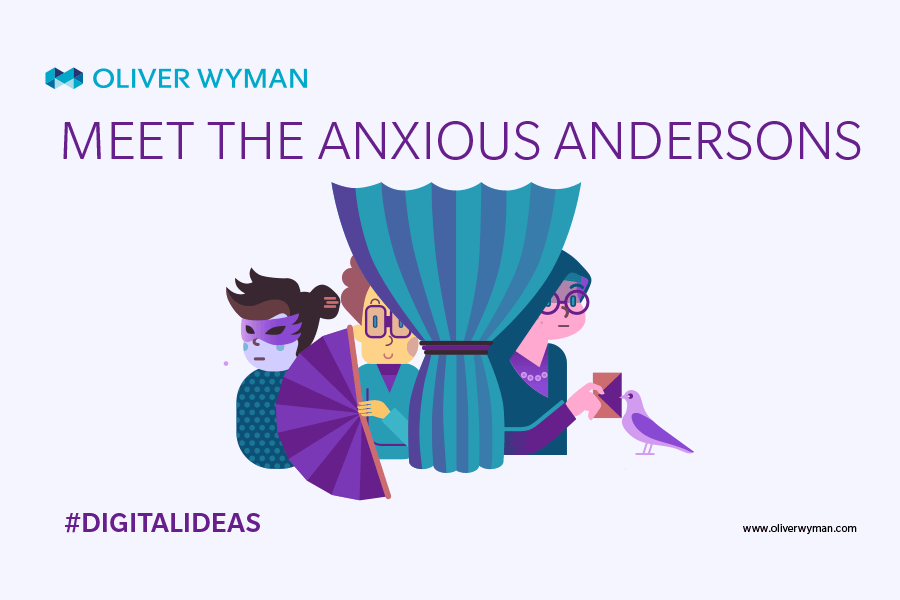Consumer companies must understand the digital families they are targeting to increase competitive advantage and thrive in the digital ageDeborah O'Neill, Partner, Oliver Wyman Labs and Financial Services
We analysed survey data from over 1,500 respondents in our Britain’s Digital DNA research to profile the digital families that make up Britain today.
The results show a quarter (24 percent) are comfortable with the pace of digital change and innovation and are Laidback Luis, while 19 percent are Anxious Andersons. The remaining families are the Carefree Careys (15 percent), the Online Owens (15 percent), the Contributing Coles (15 percent), and the least digitally savvy of all: the Analogue Alis (12 percent).
By understanding which digital family your customers fall in to – particularly your most valuable ones – your digital strategy can be modified to better serve their particular needs. The full report gives detailed descriptions of the families and gives examples of adaptations that suit each family's online preferences.
Meet the Anxious Andersons
19 percent of the UK are Anxious Andersons. They are defenders of privacy, concerned about cybercrime, and willing to go ‘off-the-grid’ to keep their data protected.
When interacting with the Anxious Andersons, business should be extra careful to limit the information the collect to a minimum, and transparently explain what is being recorded and why it is needed. They must avoid blurring the line between customer service and marketing.






